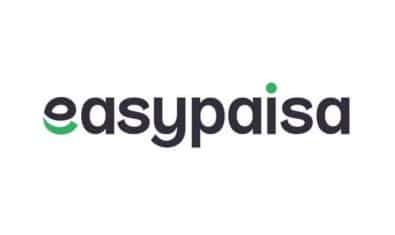By Naseer Muhammad
Ways of doing business have rapidly changed in the 2 past decades. This change has cascaded its effects on the Pakistani market which can be observed by the introduction of new banks, financial services, and institutions. People are now adopting electronic ways of managing their money.
With the passage of time, people are becoming more comfortable with them. The concept of branchless banking has recently emerged and is now becoming very popular due to the user-friendly use-cases which are specifically addressed to fill the gap in the market. A lot of Fintech candidates jumped into the market to reap its benefits as this is the right time to understand the issues that have not been addressed yet.
Traditional commercial banks in Pakistan are now facing quite a big challenge to compete with the new fintech organizations. Most of the fintech companies have a strong and widespread agent network throughout the country which can be used to serve without any boundaries of time and location.
Commercial banks, on the other hand, fall way behind when it comes to accessibility to normal consumers. They still rely on their branched network and follow a very old method of customer onboarding.
The main difference between conventional banking and fintech businesses is their purpose. Fintech products are created by recognizing a gap in the marketplace whereas traditional banks focus on risk management. Fintech institutions are more agile and tend to bend quickly to market needs. The business model of such companies is basically built on user experience. On the other hand, commercial banks are more process driven.
The legacy systems and traditional regulatory framework banks lack the ability to quickly adapt to new technologies and roll out new products and services which address the customer issues. If they want to compete in the current market, they will have to change a lot.
It’s not like that they will vanish completely if they could not compete, however, their volume of business will decrease day by day. They will only be left with services such as salary disbursement, home/car financing, and industrial investments. Fintech organizations will eventually take over these businesses too. There is a need for banks to connect to businesses in order to ease the long and time-consuming processes.
Adopting the change will have its implications on regulatory requirements and might create compliance issues, but banks should sit with the regulator (in our case, the State Bank) and work on how to compete with the current market without compromising the international regulations as well as domestic AML constraints. Otherwise, the new SBP regulation, which states that having an escrow bank as a partner is not mandatory for having an EMI license (Electronic Money Institution), will open a new dimension in financial services competition.
There is a new concept emerging in the form of “TechFin” where tech giants like Tencent and Alibaba are providing financial services with a more customer & technology-centric approach. Social media giants like Facebook and famous smartphone brands like Apple are also joining the race. With the new EMI regulation, it is very easy for such technology giants to start providing microfinance services. It will become very difficult for banks to compete with these organizations. These organizations are also a threat to existing Fintech companies.
Banks and fintech companies should also support the financial resource (Bank Account) migration from one bank to another. A lot of people are not comfortable with having accounts in multiple banks, but in most of the cases, employers force new employees to open new accounts to receive salaries in the bank of their choice.
It is easy for an employer to manage the financials of both the company and employee in the same bank. That is why on each new job, employees must create a new bank account in the corresponding bank where the employer has maintained its financials. To avoid this, bank account migration will be a unique and useful use-case.
It can be done easily by using the unique identifier of the CNIC number (Computerized National Identity Card) as the primary identification unit. The transaction history of the previous bank can remain in the old bank for audit purposes. All open accounts can be linked to a single identifier CNIC.
The concept is quite different than the one currently available in some banks, which is called “source of the fund” where a user can register all of his/her financial identifiers under a single bank interface. The concept is actually bringing all financial identifiers under a single main identifier which can be a CNIC number.
Banks in Pakistan should partner with fintech companies to cover financial inclusion in remote areas. The concept is becoming popular in Europe where the majority of banks have partnered with branchless banks and fintechs to cover new market areas.
Banks usually have big infrastructures and workforces so it’s easy for them to connect with such businesses to provide a better market place to their consumers. The concept of open banking and open application can really help the traditional banks where open and secure APIs can be exposed to business and startups.
Commercial banks should get rid of the old branch-based concept where each customer has to go to the specific branch where the bank account exists. There should be a centralized agent support system where a consumer can get the banking facilities anywhere, anytime at any branch.
AML system for banks in Pakistan should be revamped. A centralized and consolidated database should be maintained by the State Bank of Pakistan for banks to validate the users and transactions.
Initiating this change is not a tedious task since NADRA is already maintaining a complete database of the citizens in Pakistan which can be used to accumulate the AML checks at a centralized location, where controls can be managed by law enforcement and regulatory bodies.
Right now, each bank has to maintain a complete AML structure independently, which is ineffective in terms of cost as well as usability, as data in the AML database of one bank can differ from the data in the other banks.
This sort of discrepancy can only be avoided when we have a centralized AML and KYC (Know Your Customer) system. Regulators should provide ease of doing business for banks along with the ensuring strict implementation of regulations. After all, banks and fintechs are here for business.























Nicely explained……a call to action for banks
Well This is very Good if implimented asap
One CNIC is everything with BioMatric
:)